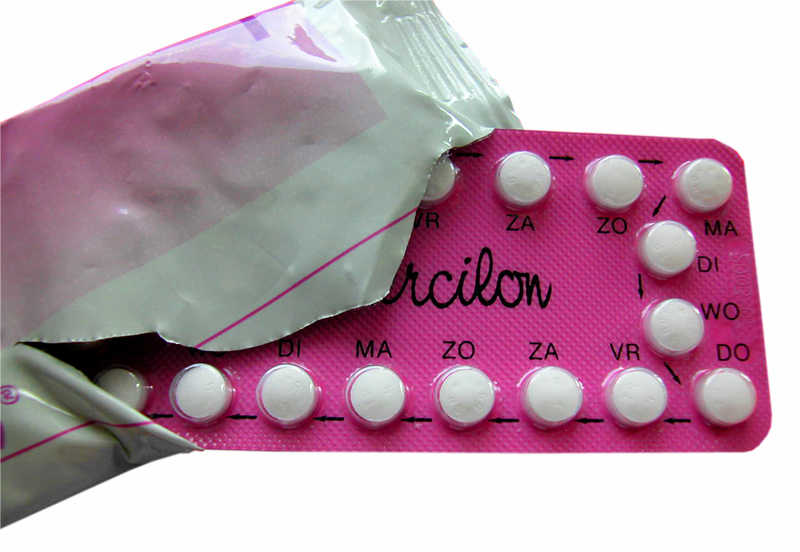Como evitar uma gravidez?
Cerca de 85% das mulheres sexualmente activas que não usam contraceptivos engravidam no período de um ano. Uma mulher também pode engravidar durante a amamentação, 10 dias depois de ter tido um filho e ainda, durante a sua menstruação. O coito interrompido (retirar o pénis antes da ejaculação) durante o acto sexual, ou a abstinência periódica (não ter relações sexuais durante o período fértil) não evita uma gravidez, nem protege das doenças sexualmente transmissíveis (DST), como por exemplo, a SIDA. De seguida poderá obter mais informações sobre os diferentes métodos contraceptivos.
Métodos para evitar uma gravidez indesejada:
1. Abstinência total
2. Uso de contraceptivos
Se é sexualmente activa e pretende evitar uma gravidez indesejada utilize sempre um método contraceptivo.
Métodos contraceptivos
Nenhum método oferece 100% de protecção. O presevativo de latex masculino é o único método contraceptivo considerado altamente eficaz na redução do risco de contraír uma DST. As pílulas contraceptivas, o implante, e o DIU (dispositivo intra-uterino) não protegem das DST's.
O DIAFRAGMA feminino é um disco de borracha com uma extremidade flexível, que cobre o cérvix e que deve ser usado com um espermicida. Só pode ser utilizado mediante receita médica e colocado por um profissional de saúde. O diafragma protege apenas por 6 horas e deve permanecer outras 6 horas após a última relação sexual, e nunca poderá ficar colocado por mais de 24 horas.
CONTRACEPTIVOS ORAIS protegem da gravidez, através da combinação de hormonas progestativas e estrogénio. As hormonas impedem a ovulação. A pílula deve ser tomada diariamente. Não fará efeito se depois de a tomar vomitar ou tiver diarreia. Podem surgir alguns efeitos secundários, tais como náuseas, dores de cabeça, inchaço do peito, aumento de peso, pequenas perdas de sangue irregularres e depressão.
DEPO-PROVERA é um contraceptivo hormonal injectado no braço ou na nádega, a cada três meses. A menstruação pode desaparecer ou tornar-se muito irregular.
IMPLANTES (como o Norplant ou implanon) são pequenas varas de borracha, que são colocadas cirurgicamente debaixo da pele do antebraço, libertando contraceptive steroid levonorgestrel. A protecção dura entre 3 a 5 anos. Efeitos secundários possíveis: alteração no ciclo menstrual, aumento de peso, inchaço do peito e perda de massa muscular.
DIU (dispositivo intra-uterino) é um aparelho em forma de T inserido no útero, por um profissional de saúde. O DIU pode ficar no útero entre 5 a 10 anos. Este é o método contraceptivo com a taxa mais baixa de eficácia anti-contraceptiva. Por vezes, o DIU pode ser expelido. Por isso, todos os meses a mulher deve verificar com o dedo se aida sente o fio do DIU. Efeitos secundários: perda de sangue anormal e dores menstruais, mas que apenas acontecem durante e logo após a inserção do DIU.
ESTERILIZAÇÃO FEMININA é feita cirurgicamente. Depois de laqueadas as trompas, os óvulos já não podem ser fecundados com o esperma masculino, e assim, já não é possível engravidar. Esta é uma forma contraceptiva permanente e definitiva.
CONTRACEPÇÃO DE EMERGÊNCIA deve ser tomada até 72 horas após ter tido relações sexuais sem protecção, de forma a impedir uma eventual gravidez. A mulher deve tomar a pílula Norlevo, e depois outra 12 a 24 horas mais tarde. Para além do Norlevo, podem-se usar combinações de pílulas contraceptivas (progestativas e estrogénios). Tome até 72 horas após ter tido relações sexuais desprotegidas. Uma dose de 100 µg ethinylestradiol + 500 µg levonorgestrel (2-4 pílulas contraceptivas), 12 horas depois uma segunda dose.
O DIU deve ser inserido na manhã seguinte ou até 5 dias depois de ter tido das relações sexuais sem protecção. O DIU pode ficar entre 5 a 10 dias.
Para o homem
PRESERVATIVOS : a maioria é feita de borracha de látex e só pode ser utilizado uma única vez. Alguns têm espermicidas que matam o esperma. Agem como uma barreira mecânica, evitando o contacto vaginal com o sémen, infecções genitais e lesões genitais. Os preservativos são o método contraceptivo mais eficaz para reduzir o risco transmissão de doenças sexuais, como a SIDA. É importante saber usá-lo correctamente e colocá-lo antes da penetração.
ESTERILIZAÇÃO MASCULINA, também conhecida como vasectomia, é uma operação feita com anestesia local com o mínimo risco de complicações pós-cirúrgicas, como perda de sangue ou infecções. A capacidade de ter uma erecção ou ejaculação não desaparece. As células de esperma são apenas uma parte do fluído (1%) e ao ter uma ejaculação, o homem não notará qualquer diferença. O corpo absorverá as células de esperma.
Taxas de segurança dos diferentes métodos contraceptivos
Taxas de eficácia:
• Preservativos de latex masculinos 86%.
• Preservativo Feminino 79%.
• Diafragma com espermicida 80%.
• Contraceptivos orais Cerca de 95%.
• Injecção (Depo-Provera) Cerca de 99%.
• Implante (Norplant, Implanon) Cerca de 99%.
• DIU (Dispositivo intra-uterino) 98-99 %
• Esterilização Cirúrgica Cerca de 99%
• Contraceptivos de emergência: 75%.
O que é uma IST? Infecção Sexualmente Transmitida
ISTs são infecções transmitidas através do contacto sexual. Uma Doença…
Serviços prestados pelas Women on Waves
Informação e fornecimento de contraceptivos e de contraceptivos de emergência;
